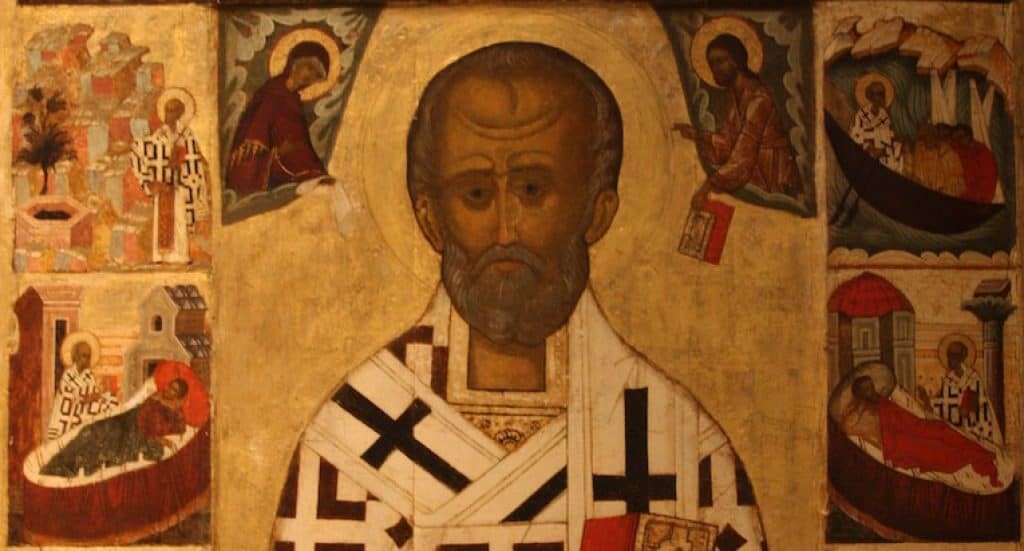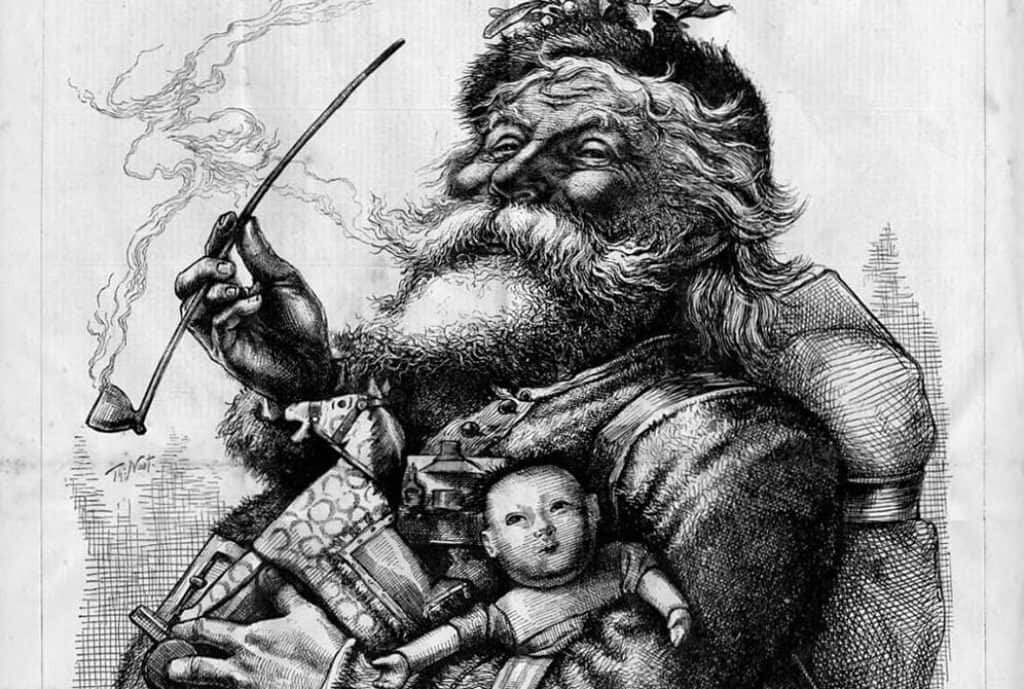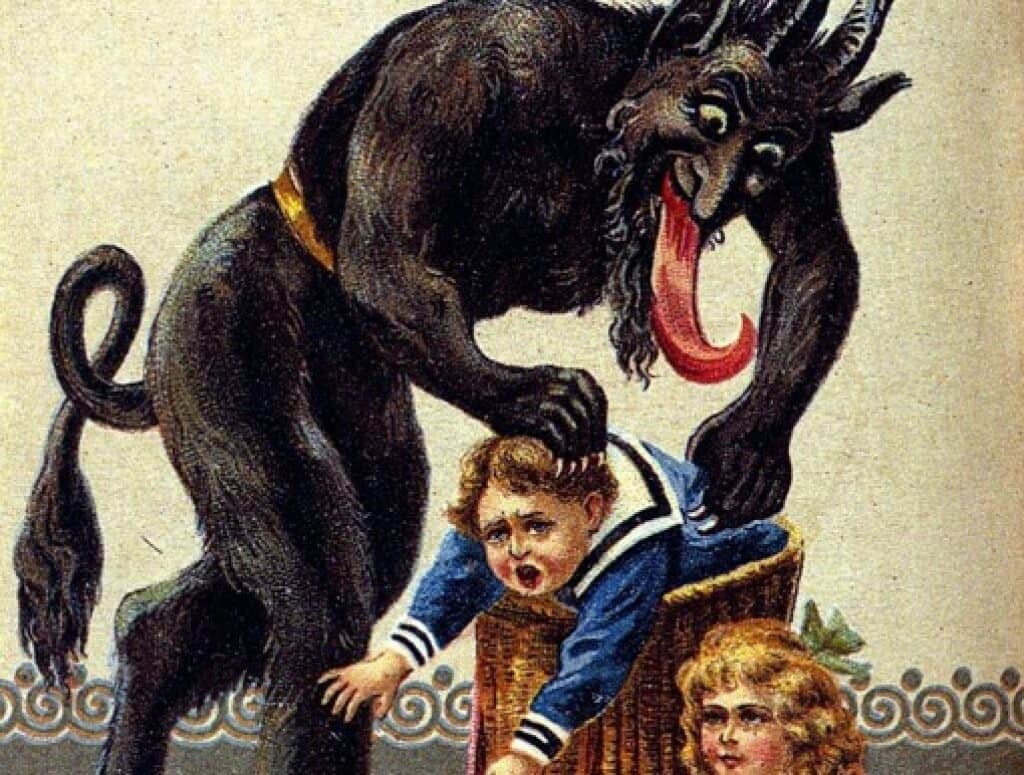Santa Claus and Krampus are intimately related. Some traditions have the two characters working together in a “good cop-bad cop” fashion depending on the behavior of the child. However, the origin of Santa Claus and Krampus started out as two separate myths from different regions of the world.
Origins of Santa Claus
Today’s image of Santa Claus is vastly different from the one that many believe was the inspiration behind the icon in the first place. Far from being a rotund jolly man with rosy cheeks that is instantly recognizable today, the Turkish monk St. Nicholas was a much more humble-sounding man. While his exact date of birth isn’t known, it is generally assumed to have been around A.D. 250 in Patara which was, at the time, in a town called Myra in Anatolia.

Saint Nicholas’ Good Deeds
Stories of his incredible generosity became legendary. This most pious of people reportedly used his own inherited money to donate to the less fortunate. Accounts tell us that he traveled the country and helped the poor and infirm whenever he could. One of the most often recounted stories concerns three sisters who were at risk of being sold into slavery by their very own father. St Nicholas secretly provided each sister with a personal dowry so that she may find herself a groom to take care of her.
Saint Nicholas’s reputation spread throughout Europe. Over time he became better known as the sole protector of children and sailors. Such was his appeal that the 6th of December, the date of his death, is St. Nicholas’s Day. This is an auspicious day for people to buy something big or get married. During the Renaissance, St. Nicholas was possibly the most popular saint in the whole of continental Europe, and he survived the Protestant Reformation while other saints grew in popularity. St Nicholas is as well-known nowadays as he had always been, particularly in the Netherlands, where they called him Sinterklaas.
Saint Nicholas Appears in America
In December 1773 and the following year, a newspaper in New York ran a story about several local Dutch families that got together on the anniversary of Nicholas’s death to celebrate his life. This was the saint’s first appearance in American culture. The title of Santa Claus stemmed from this original report. In Dutch, Sinterklaas translates as Saint Nicholas and the name stuck. In the 1804 New York Historical Society annual meeting, John Pintard distributed woodcut images featuring Saint Nicholas and Christmas stockings full of toys hanging over the fireplace.
Meanwhile, the Germans had their version of St. Nicholas and called him Pelznickel. Pelz means fur and nickel means Nicholas. Their early incarnation of the saint portrayed him wearing furs. St Nicholas’s reputation grew, even more, when Washington Irving published The History of New York five years later. His story referred to St. Nicholas as the patron saint of New York. Descriptions of Sinterklaas varied wildly, but the German version and the Dutch versions merged over time. Some of the early Santas had a blue three-cornered hat, yellow stockings, and he was something of a rascal.

The establishment of the modern-day Santa came in 1931 when the Coca-Cola soft drink giant commissioned an artist for a Christmas advertising campaign, which is still going strong today. Using Thomas Nast’s illustrations created for Harper’s magazine in the mid-1800s, the familiar, rotund man with glowing cheeks and a bright red suit with white fur trimmings and black boots entered the public consciousness and became an overnight success.
Origins of Krampus
Santa went on to become a global phenomenon of wholesome goodness and a symbol for children all over the world. The counterpart to Santa is the total opposite. Krampus is a hideous-looking creature with large horns, a sharp slithery tongue, and dagger-like claws. He appears part goat and all horror and rattles his chains to warn children of his approach. His birch sticks and fangs frighten little ones into being good. But if the children do not heed his warnings, he finds them and drags them down to the underworld, where they will stay for one year.

Krampus gets his name from the old Germanic word krampen which translates as claw. His origins come from Norse mythology in which he is the son of Hel, goddess of the underworld. Krampus forms part of ancient Germanic traditions during the winter season. German Christmas starts earlier than most in early December. The 5th of December is the eve of Krampusnacht or Nikolaustag (St Nicholas’s Day). On this night parents told their children to check outside the door to see if their shoes contained some candy or a rod.
Obviously, the child would prefer the candy over the rod. But questions about why parents would want to frighten their offspring with stories of an underworld monster who originated from pagan theology likely had a lot to do with the suppression of Krampus for generations. Over the last few years, however, the scary Yuletide character has been making a comeback. As well as Christmas-themed horror films, National Geographic published a book based on Krampus written in German.
Krampus Around the World
In several European countries, such as Austria, Germany, Hungary, and the Czech Republic, men dress in a Krampus costume and participate in events dubbed Krampuslauf. These events consist of one or more Krampuses chasing scores of people in something like a fun-run. Even in America, Krampus fever is spreading much like Santa Claus did all those years back, where themed parties based on the Christmas devil are on the increase. Austrians are also attempting to improve Krampus’s public relations by turning out all manner of merchandise from chocolates to figurines in his image. Apparently, the child-hunting demon has suddenly become something of a Christmas salesman.
Merry Christmas, or Krampus, to all readers.
Sources:
The Noah Project
History
National Geographic
Wikipedia